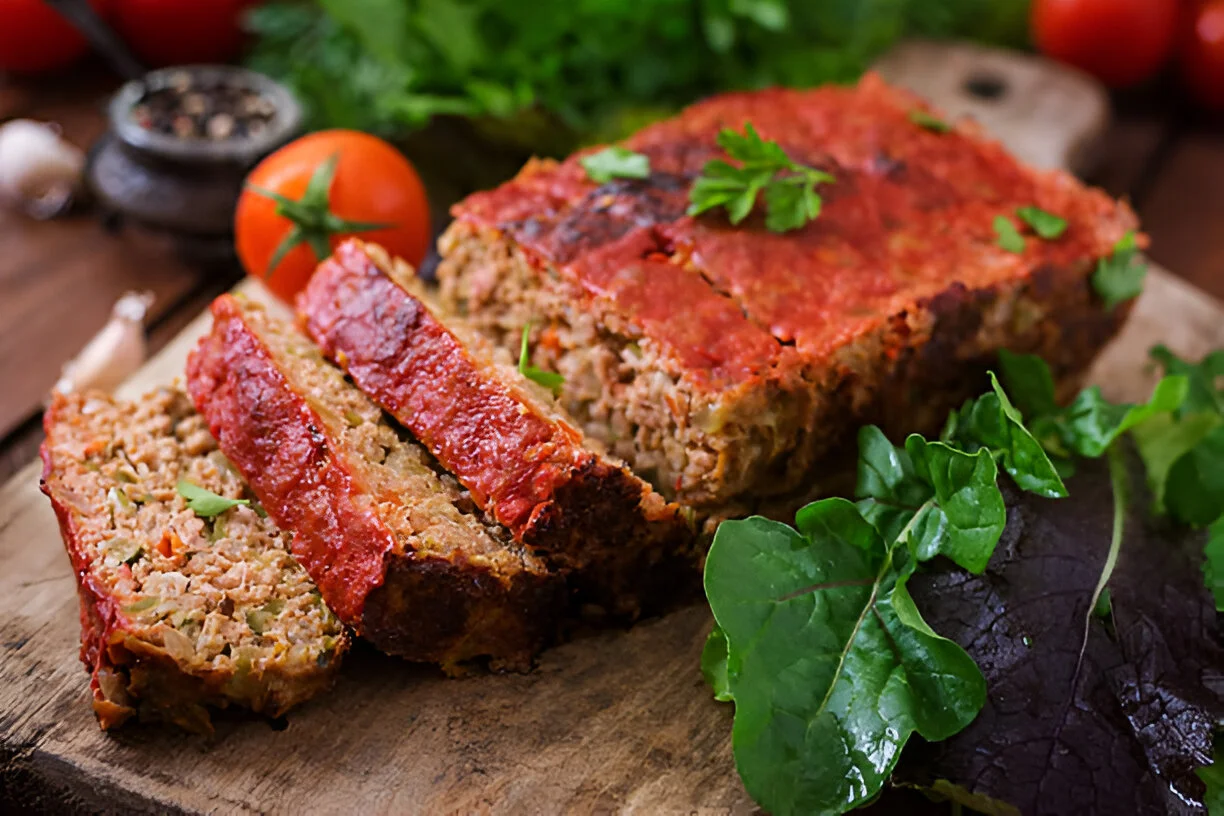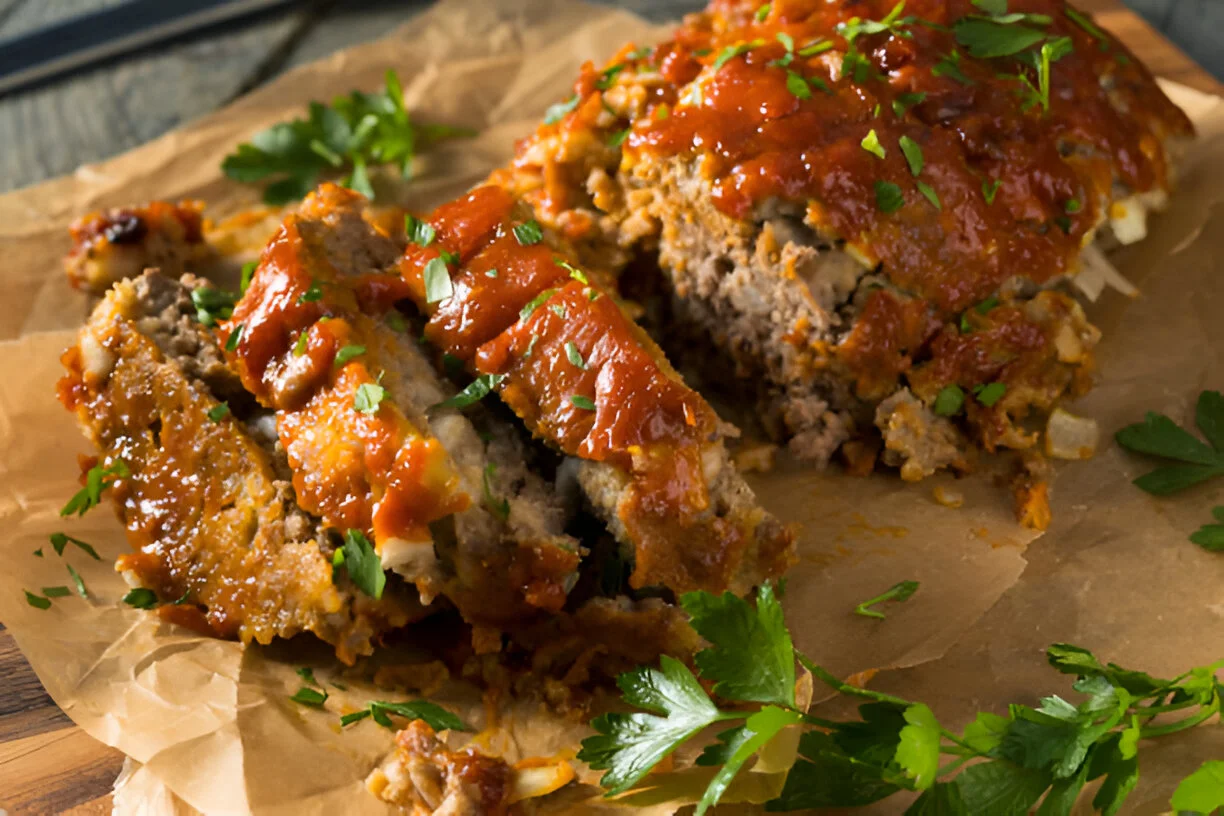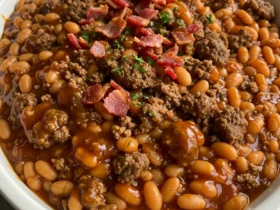Meatloaf is a beloved comfort food that has graced dinner tables for generations. But with growing health consciousness, you might wonder if this classic dish is actually good for you. Let’s dive into the nutritional aspects of meatloaf and determine whether it can fit into a healthy diet.
Nutritional Overview of Meatloaf
Meatloaf is a versatile dish that can vary greatly in its nutritional profile based on the ingredients used. Typically, a serving of traditional meatloaf contains:
- Calories: Approximately 300-400 calories per serving, depending on the recipe and portion size.
- Fat: 20-30 grams of fat, which includes saturated and unsaturated fats. The fat content can vary depending on whether you use lean or fatty cuts of meat.
- Protein: 20-25 grams of protein per serving, making it a substantial source of this essential nutrient.
- Carbohydrates: 10-15 grams of carbohydrates, largely from breadcrumbs or other fillers.
These nutritional values are subject to change based on recipe modifications. For instance, using lean meats and whole grain breadcrumbs can significantly alter these figures. For more detailed information on maintaining a balanced diet, the American Heart Association’s Dietary Guidelines provides comprehensive guidance on managing calorie intake and fat consumption.
Health Benefits of Meatloaf
Meatloaf, when made with wholesome ingredients, can offer several health benefits:
- Protein Source: Meatloaf is a rich source of protein, which is crucial for muscle growth, repair, and overall bodily functions. Protein also helps in maintaining healthy skin and hair.
- Nutrient-Rich: Depending on the type of meat used, meatloaf can provide essential vitamins and minerals. For example, lean beef offers iron and zinc, both important for immune function and overall health.
- Customizable: One of the advantages of meatloaf is its versatility. You can enhance its nutritional profile by incorporating vegetables like spinach, carrots, or bell peppers. This not only adds essential vitamins but also increases fiber content, aiding in digestion and overall health.
For a deeper understanding of how to balance your diet with nutrient-rich foods, explore the Harvard T.H. Chan School of Public Health’s Nutrition Source.
Potential Health Risks of Meatloaf
While meatloaf can be a nutritious dish, it also has some potential health risks, especially if not prepared with health-conscious choices:
- High in Fat and Cholesterol: Traditional meatloaf recipes often use fatty cuts of meat, leading to high levels of saturated fat and cholesterol. Consuming too much saturated fat can raise LDL (bad) cholesterol levels, which is a risk factor for heart disease.
- Sodium Content: Many meatloaf recipes call for processed ingredients like canned soups or pre-made sauces, which can significantly increase sodium levels. Excessive sodium intake is associated with high blood pressure and cardiovascular issues.
- Processed Ingredients: Using pre-packaged breadcrumbs or mixes can add unnecessary calories, sodium, and preservatives. These additives can diminish the overall healthiness of the meal.
To mitigate these risks, consider making modifications such as using lean ground meat, reducing sodium by opting for low-sodium products, and incorporating fresh, whole ingredients. For additional tips on maintaining a healthy diet, visit the Mayo Clinic’s Nutrition and Healthy Eating page.
Healthier Alternatives and Modifications
If you enjoy meatloaf but want to make it a healthier option, there are several effective modifications you can implement:
- Choose Lean Meats: Opt for lean ground beef, turkey, or chicken instead of fatty cuts. Lean meats reduce the overall fat content while still providing ample protein. Ground turkey or chicken can be particularly beneficial for lowering saturated fat levels.
- Incorporate Vegetables: Add finely chopped vegetables like carrots, spinach, or bell peppers to the meat mixture. Vegetables not only boost the nutritional value by adding vitamins and minerals but also increase fiber content, which aids in digestion and promotes a feeling of fullness.
- Substitute Whole Grains: Instead of traditional breadcrumbs, use whole-grain or oat breadcrumbs. Whole grains provide more fiber and essential nutrients compared to refined grains. Alternatively, consider using quinoa or ground flaxseed for added nutrition.
- Reduce Sodium: Limit the use of high-sodium ingredients like pre-made sauces or canned soups. Use fresh herbs and spices to enhance flavor without adding extra salt. Low-sodium or homemade alternatives can significantly cut down on sodium content.
For more ideas on making nutritious adjustments to your meals, the Harvard T.H. Chan School of Public Health’s Nutrition Source offers helpful suggestions.
Comparing Meatloaf with Other Protein Sources
When assessing the healthiness of meatloaf, it’s useful to compare it with other protein sources:
- Chicken: Skinless chicken breast is lower in fat and calories compared to traditional beef meatloaf. It provides high-quality protein with fewer saturated fats, making it a heart-healthy option.
- Fish: Fish, particularly fatty types like salmon, is rich in omega-3 fatty acids. These healthy fats can benefit heart health and lower cholesterol levels. Unlike meatloaf, fish offers these benefits without the higher levels of saturated fat.
- Plant-Based Proteins: Beans, lentils, tofu, and other plant-based proteins provide fiber, vitamins, and minerals without the cholesterol and saturated fat found in meatloaf. They also offer a lower calorie alternative, which can be beneficial for weight management.
Understanding these differences helps in making informed dietary choices. For a broader perspective on protein sources and their benefits, the Mayo Clinic’s Nutrition and Healthy Eating page provides comprehensive information.
How to Make Meatloaf Healthier
Transforming meatloaf into a healthier meal involves several strategies:
- Select Lean Ground Meat: Use lean ground beef or alternative meats like turkey or chicken to reduce fat content. You can also explore plant-based meat substitutes for a lower-fat option.
- Boost Nutritional Value with Vegetables: Add vegetables to your meatloaf mix to increase fiber and nutrient density. Ingredients like chopped mushrooms, zucchini, or spinach blend well and enhance the dish’s health benefits.
- Opt for Healthy Binders: Instead of using regular breadcrumbs, try using whole grain breadcrumbs or rolled oats. These options offer more fiber and nutrients.
- Use Low-Sodium Ingredients: Prepare your own sauces and seasoning blends to control sodium levels. Fresh herbs and spices can add flavor without the need for excess salt.
By making these adjustments, you can enjoy a healthier version of meatloaf while still maintaining the comforting essence of the dish.

Meatloaf in a Balanced Diet
Incorporating meatloaf into a balanced diet requires thoughtful planning:
- Portion Control: Serve meatloaf in moderate portions to manage calorie and fat intake. Pair it with plenty of vegetables or a fresh salad to balance the meal.
- Balanced Meals: Complement meatloaf with nutrient-dense side dishes. Whole grains like brown rice or quinoa and a variety of vegetables can create a well-rounded plate.
- Frequency and Variety: While meatloaf can be part of a healthy diet, ensure that it’s not the only source of protein. Incorporate a variety of protein sources such as fish, poultry, legumes, and plant-based options to cover a broad range of nutrients.
Maintaining balance and variety in your diet supports overall health and well-being.
FAQs About Meatloaf and Health
Is meatloaf high in cholesterol?
Traditional meatloaf can be high in cholesterol, particularly when made with fatty cuts of meat. Using lean meats or plant-based alternatives can help lower cholesterol levels.
Can I make meatloaf with ground turkey or chicken?
Yes, ground turkey or chicken are excellent alternatives to beef for making a healthier meatloaf. They offer lower fat content and can be just as flavorful when seasoned well.
What are some low-fat alternatives to traditional meatloaf?
Consider using lean ground meats, incorporating vegetables, and substituting whole-grain breadcrumbs for traditional ones. These modifications can reduce fat and calorie content while enhancing the dish’s nutritional profile.
Conclusion
Meatloaf, when prepared thoughtfully, can be part of a nutritious and balanced diet. By opting for lean meats, incorporating vegetables, and making mindful ingredient choices, you can enjoy this classic dish while maintaining your health. Remember to pair it with wholesome sides and practice portion control to achieve a well-rounded meal.
For some delicious side dishes to complement your meatloaf, check out this guide on perfect pairings. And if you’re looking to perfect your meatloaf recipe, don’t miss these tips and variations.
Feel free to share these tips with others who might benefit from making their meatloaf healthier! 😊











Leave a Reply